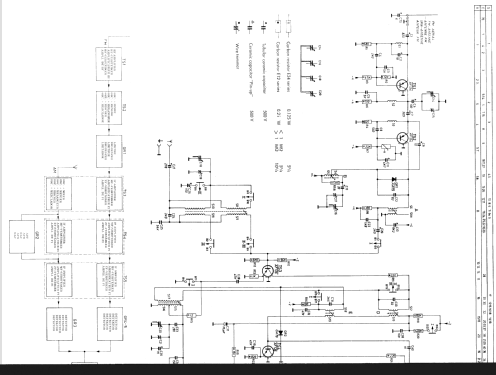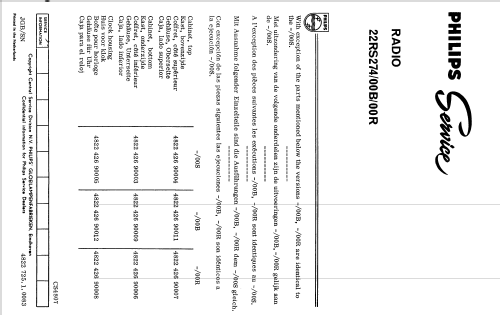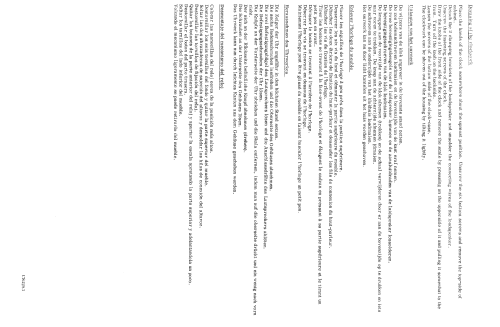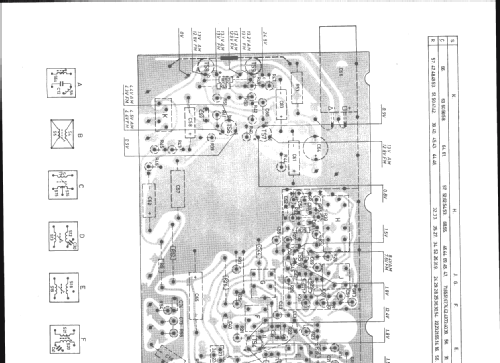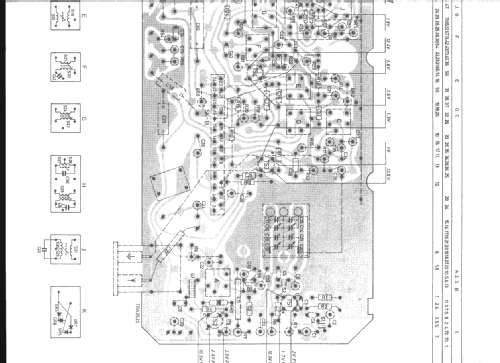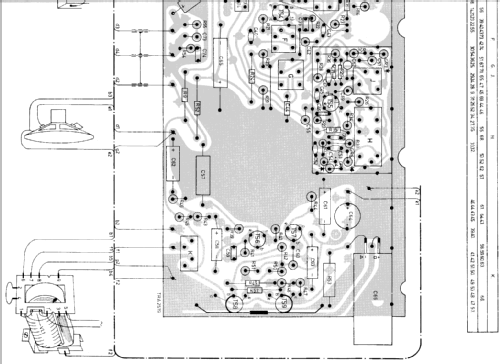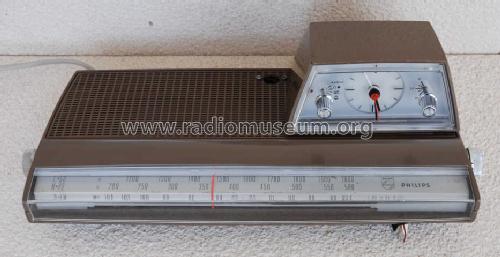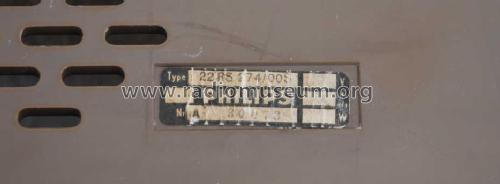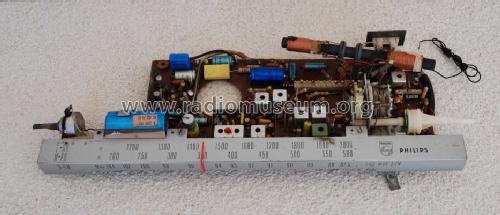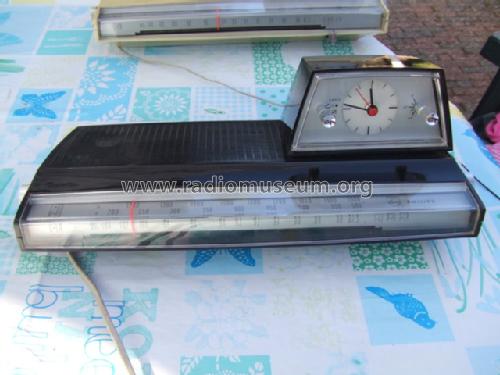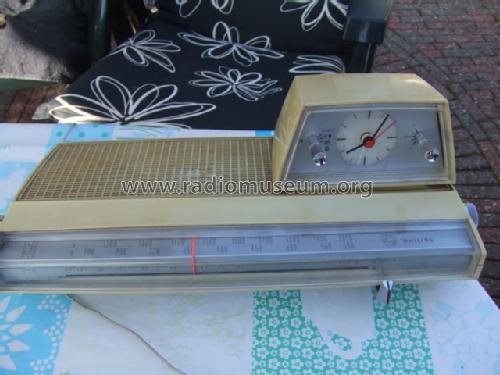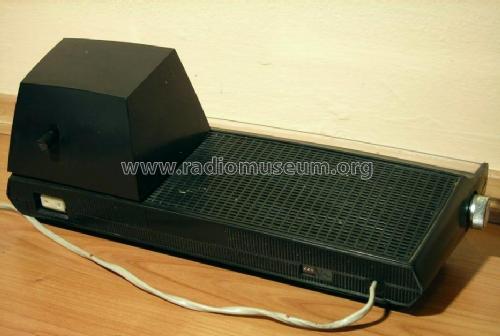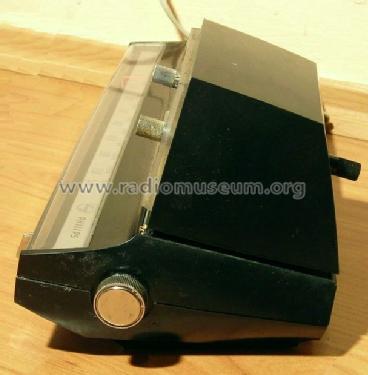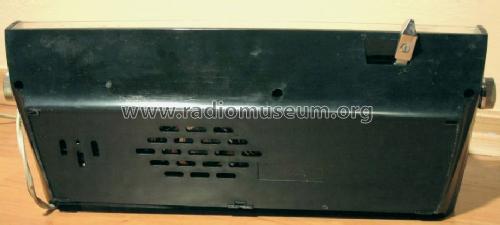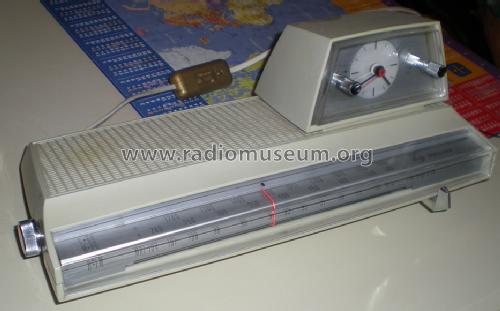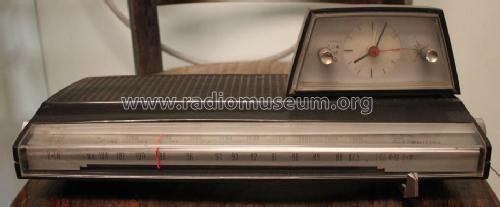22RS274 /00S /00B /00R
Philips; Eindhoven (tubes international!); Miniwatt
- Country
- Netherlands
- Manufacturer / Brand
- Philips; Eindhoven (tubes international!); Miniwatt
- Year
- 1967 ?
- Category
- Broadcast Receiver - or past WW2 Tuner
- Radiomuseum.org ID
- 200054
Click on the schematic thumbnail to request the schematic as a free document.
- Number of Transistors
- 9
- Main principle
- Superheterodyne (common); ZF/IF 452/10700 kHz; 3 AF stage(s)
- Tuned circuits
- 5 AM circuit(s) 7 FM circuit(s)
- Wave bands
- Broadcast, Long Wave and FM or UHF.
- Power type and voltage
- Alternating Current supply (AC) / 110; 127; 220 Volt
- Loudspeaker
- Permanent Magnet Dynamic (PDyn) Loudspeaker (moving coil) - elliptical
- Power out
- 1 W (unknown quality)
- Material
- Plastics (no bakelite or catalin)
- from Radiomuseum.org
- Model: 22RS274 /00S /00B /00R - Philips; Eindhoven tubes
- Shape
- Tablemodel with Clock ((Alarm-) Clock Radio).
- Dimensions (WHD)
- 380 x 140 x 180 mm / 15 x 5.5 x 7.1 inch
- Notes
-
- Clock radio: programmable on/off; alarm; slumber switch
- Cabinet in 3 different colors: /00B = beige, /00R = black, /00S = brown.
- AM radio with built-in ferroceptor.
- LW: 150 - 260 kHz.
- BC: 510 - 1808 kHz.
- FM radio with wire antenna: 87.5 - 104 MHz.
- Contains diodes: 1 x AA119, 4 x OA79.
- Net weight (2.2 lb = 1 kg)
- 2 kg / 4 lb 6.5 oz (4.405 lb)
- Mentioned in
- -- Original-techn. papers.
- Author
- Model page created by José Manuel Silvestre. See "Data change" for further contributors.
- Other Models
-
Here you find 5278 models, 4426 with images and 3461 with schematics for wireless sets etc. In French: TSF for Télégraphie sans fil.
All listed radios etc. from Philips; Eindhoven (tubes international!); Miniwatt
Collections
The model is part of the collections of the following members.
Forum contributions about this model: Philips; Eindhoven: 22RS274 /00S /00B /00R
Threads: 1 | Posts: 1
Dieses Gerät ist in Wien entwickelt worden. Entwickler el. war Herr Ing. Grillmayer, leider schon verstorben.
Während der Entwicklung fiel die sehr schlechte Empfangsleistung auf MW auf. Schließlich war die Ursache der Uhrenmotor, der im MW-Bereich starkes Rauschen verbreitete.
Die Uhr bekam eine Abschirmung aus gewöhnlichem Eisenblech, kein Mumetall, da sich als ausreichend herausstellte.
Herr Ing. Grillmayer entwickelte mehrere Radios u.a. ein Hifi-Gerät mit ext. LS. Damals wurden geteilte MW Bereiche üblich. Der Grund sind kleine Drehkondensatoren. Der MW Bereich von 510...1620 kHz erfordert ja eine C-Variation von 1:10, die mit den Schaltkapazitäten und der kleineren Endkapazität der Drehkos nicht zu erreichen war.
Rudolf Drabek, 13.Oct.21
